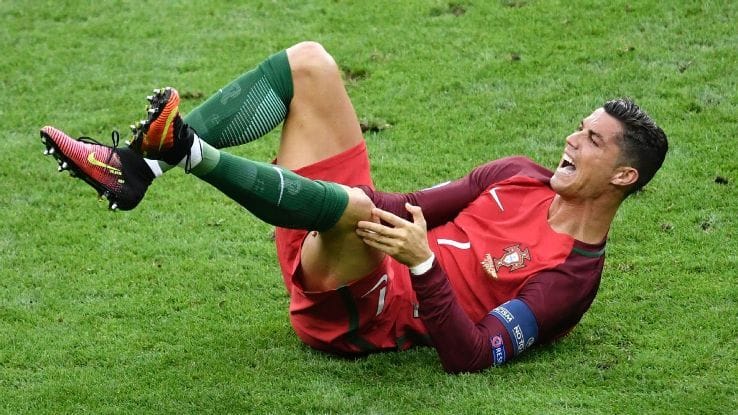Your insurance runs out. Your PT clears you. You’re officially ‘healed.’ So why do 70% of athletes report never feeling the same? There’s a critical gap in the recovery process that’s derailing careers — and it’s hiding in plain sight.
Performance coach Zak Woodward has identified a critical problem in sports rehabilitation: “Most people that go to PT get kind of reduction in symptoms, feel pretty good, get back on their feet, but they don’t feel like themselves again. They’re not an athlete again.”
This gap between being ‘cleared’ and being ‘ready’ isn’t just frustrating — it’s dangerous. As Woodward explains, “We get athletes just good enough to be able to hurt themselves again.”

The Insurance-Based Trap
The current rehabilitation model isn’t designed for athletes. As Woodward points out, most physical therapy operates on an insurance-based model where therapists are “very limited in what they’re even allowed to do with you. They’ve got two or three people that they’re seeing at a time. Most of the stuff you’re doing is on a table… it’s not an environment to get somebody back to being an athlete.”
The result? Athletes get cleared based on time rather than readiness. They complete their prescribed sessions, receive a sheet of exercises, and get sent on their way — often long before they’re truly ready to return to competition.
The 90% Fallacy
Perhaps most concerning is the standard for return to play. “85 to 90 to 95% of our non-injured side, which we also haven’t been training that hard for the last six months, is acceptable to then go and return to sport,” Woodward explains. “If our previous 100% is a level that we got injured at, especially if that was a non-contact injury, then to me that should be our minimum threshold.”
In other words, we’re clearing athletes to return at a level below where they got injured in the first place.
Bridging the Gap
So how do we solve this? Woodward suggests several key principles:
Exceed Pre-Injury Levels “I want you to be able to do things that you couldn’t do beforehand,” says Woodward. “If we want to come back and be a different version of ourself, be able to play, return to the sport… we have to be able to do things physically that we weren’t able to do before.”
Progressive Sport Reintegration “We tend to ask them to do too much,” Woodward notes. “We go from like, ‘OK, you’ve done six months, nine months of rehab, like you’re cleared. Go after it.’” Instead, he advocates for breaking down the components of the game and reintroducing them gradually.
Challenge Beyond Clearance As Woodward explains about one of his athletes: “I had guys in here 8 months post surgery hitting lifetime speed PRs on the track… you should be able to do things physically that you weren’t able to do before.”
The New Standard
True rehabilitation isn’t about getting back to “normal” — it’s about exceeding your previous capabilities. As Woodward puts it: “Rehab is done when you forget that you’ve had to rehab it in the first place.”
For athletes and coaches, this means rethinking the rehabilitation process. Medical clearance should be viewed as a minimum requirement, not a final destination. The goal isn’t just to heal — it’s to come back stronger.
The Bottom Line
The path back to competition isn’t about meeting insurance requirements or hitting arbitrary timelines. It’s about exceeding your previous capabilities and building a more resilient athlete. Only then can you truly say you’ve recovered.
Remember: You’re not trying to get back to where you were. You’re trying to get to where you never were.
Want more?
If you got this far, I bet you’ll enjoy my full interview with Zak Woodward. We go in-depth into knee injuries, recovery approaches, and how to mitigate risk of hurting yourself in your sport. Check it out here:
Book Recommendation
Becoming a Supple Leopard 2nd Edition: The Ultimate Guide to Resolving Pain, Preventing Injury, and Optimizing Athletic Performance — https://amzn.to/3QeH3sU
In Becoming a Supple Leopard, Dr. Kelly Starrett shares his revolutionary approach to mobility and maintenance of the human body and teaches you how to hack your own movement, allowing you to live a healthier, more fulfilling life. I think this is a great primer for understanding your own body and taking ownership over your recovery.

